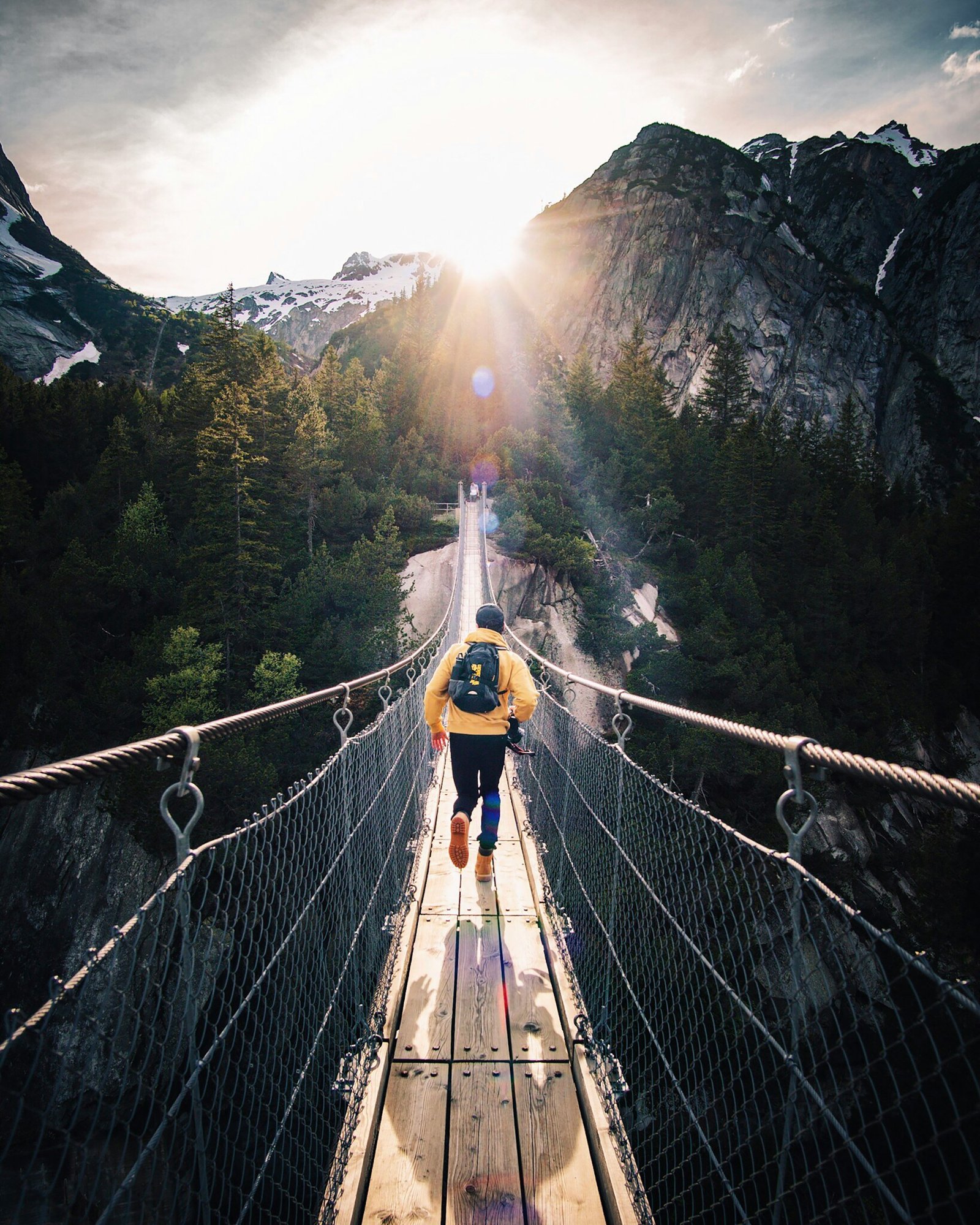Introduction to the Adventure Travel Market
The adventure travel market encompasses a wide range of activities that cater to those seeking more immersive and often physically challenging experiences. This sector includes various types of travel such as hiking, trekking, scuba diving, and cultural expeditions. These activities are designed to provide travelers with opportunities to explore new landscapes, cultures, and often push their physical limits.
Adventure travel has seen a significant surge in popularity over the past decade, appealing to a diverse demographic that spans from millennials to baby boomers. The allure of adventure travel lies in its ability to offer unique and authentic experiences that go beyond the conventional vacation. Millennials, in particular, are drawn to these experiences as they seek to create memorable moments and share them on social media platforms. Meanwhile, baby boomers are increasingly embracing adventure travel as a way to stay active and engaged in their later years.
Social media and influencers have played a pivotal role in the growing appeal of adventure travel. Platforms like Instagram and YouTube are flooded with stunning visuals and engaging content that showcase the thrill and beauty of adventure destinations. Influencers, with their vast followings and persuasive power, often highlight these experiences, making them more accessible and desirable to a broader audience. The visual nature of social media has made it easier for potential travelers to envision themselves in these exotic locations, thereby fueling their desire to embark on such adventures.
The adventure travel market is not just about physical activities; it also includes cultural expeditions that provide a deeper understanding of different societies and traditions. These experiences often involve immersive activities such as participating in local festivals, learning traditional crafts, or staying with local families. Such cultural exchanges enrich the travel experience and offer a more comprehensive understanding of the world.
Market Size and Growth Trends
The global adventure travel market has witnessed substantial growth over the past decade, reflecting an increasing consumer preference for unique and immersive travel experiences. According to recent reports, the adventure travel market was valued at USD 586.3 billion in 2019 and is projected to reach USD 1,626.7 billion by 2026, demonstrating a compound annual growth rate (CAGR) of 15.2% from 2020 to 2026. This significant expansion is driven by multiple factors, including rising disposable incomes, evolving consumer preferences, and technological advancements that have revolutionized the travel industry.
One of the primary drivers behind the burgeoning adventure travel market is the increased disposable income among the global population. As more individuals gain financial stability, the propensity to spend on travel, particularly adventure-oriented experiences, has surged. This trend is particularly notable among millennials and Generation Z, who prioritize experiential travel over traditional vacation options.
Changing consumer preferences have also played a pivotal role in the market’s growth. Modern travelers are increasingly seeking out destinations and activities that offer unique, authentic experiences. This shift has led to a rise in demand for adventure travel services that provide opportunities for activities such as hiking, diving, and cultural immersion. The desire for sustainable and eco-friendly travel options has further fueled this trend, as consumers become more conscious of their environmental impact.
Advancements in travel technology have significantly contributed to the accessibility and popularity of adventure travel. Innovations such as improved booking platforms, virtual reality previews, and enhanced safety measures have made it easier for travelers to plan and embark on adventure trips. Additionally, the rise of social media has amplified the appeal of adventure travel, as travelers share their experiences online, inspiring others to follow suit.
Overall, the adventure travel market’s impressive growth trajectory is a testament to the evolving landscape of the travel industry. As consumer preferences continue to shift towards more personalized and immersive experiences, the market is poised for continued expansion, driven by economic, technological, and social factors.
Key Demographics and Target Audience
The adventure travel market attracts a diverse array of participants, with key demographics spanning various age groups, genders, income levels, and geographical regions. Understanding these demographics is crucial for stakeholders aiming to cater to this dynamic sector.
Adventure travelers predominantly fall within the 25-45 age range. This cohort is characterized by a desire for unique and immersive experiences, often seeking out adventure travel as a means of breaking from routine and exploring new environments. However, there is a growing trend of older adults, particularly those aged 50 and above, engaging in adventure travel, spurred by increased disposable income and a focus on active, healthy lifestyles.
Gender distribution within the adventure travel market tends to be relatively balanced, though slight variations exist depending on the type of activity. For example, men are more likely to participate in high-adrenaline sports such as mountain biking and rock climbing, whereas women often gravitate towards activities like hiking and cultural exploration. This gender segmentation can influence how travel packages are marketed and tailored.
Income levels also play a significant role in shaping the adventure travel landscape. Individuals with higher disposable incomes are more likely to partake in international adventure travel, characterized by longer trips and more extravagant experiences. Conversely, those with moderate incomes often seek out domestic or regional adventures that are more budget-friendly yet still offer enriching experiences.
Geographically, North America and Europe remain dominant regions for adventure travel, supported by well-developed infrastructure and a high degree of travel readiness among the population. Emerging markets in Asia and Latin America are witnessing a surge in adventure travel interest, driven by growing middle classes and increased accessibility to information and travel services.
Recent surveys and studies reveal that the motivations behind adventure travel are varied but often center around the desire for personal growth, physical challenge, and cultural immersion. These motivations underscore the importance of offering diverse and customizable travel experiences to meet the nuanced preferences of different demographic groups.
Popular Adventure Travel Destinations
Adventure travel has surged in popularity, attracting enthusiasts to diverse and rugged landscapes across the globe. Among the top destinations, a few stand out due to their unique experiences and activities, political stability, robust infrastructure, and breathtaking natural attractions.
South America: Patagonia, straddling Chile and Argentina, offers a dramatic backdrop of jagged peaks, expansive glaciers, and azure lakes. Activities such as trekking the famed W Circuit in Torres del Paine National Park or ice hiking on Perito Moreno Glacier draw thrill-seekers. The region’s well-developed infrastructure and political stability enhance its appeal.
Asia: Nepal, home to the world’s highest peaks, including Mount Everest, is a mecca for mountaineers and trekkers. The country’s well-marked trails, like the Annapurna Circuit, provide opportunities for high-altitude hiking amidst stunning scenery. The local communities’ hospitality and the relative safety of the region contribute significantly to its status as a prime adventure destination.
North America: The Canadian Rockies in Alberta and British Columbia offer endless opportunities for adventure. From skiing and snowboarding in winter to hiking and mountain biking in summer, the region’s diverse activities attract year-round visitors. The combination of excellent infrastructure, political stability, and protected natural parks ensures a memorable and secure experience.
Africa: Tanzania’s Mount Kilimanjaro, the highest free-standing mountain in the world, provides an accessible yet challenging climb for those looking to test their limits. Safaris in the Serengeti or Ngorongoro Crater showcase the continent’s unparalleled wildlife. Tanzania’s improved infrastructure and relative political stability in recent years have further boosted its popularity among adventure travelers.
Europe: Iceland’s dramatic landscapes, including volcanoes, geysers, and glaciers, make it a top destination for thrill-seekers. Activities such as ice climbing, glacier hiking, and exploring lava caves are complemented by the country’s excellent infrastructure and political stability, ensuring a safe and exhilarating adventure.
These destinations exemplify the global appeal of adventure travel, drawing individuals with the promise of extraordinary experiences set against the backdrop of some of the world’s most stunning natural landscapes.
Economic Impact of Adventure Travel
Adventure travel has emerged as a significant driver of economic growth for both local communities and national economies. This specialized tourism sector not only attracts international visitors but also promotes job creation, infrastructure development, and conservation efforts. As a result, it has become an integral part of economic strategies in various countries and regions.
One of the primary economic benefits of adventure travel is job creation. From tour guides to hospitality staff, the industry generates employment opportunities for local residents. For instance, in Nepal, the thriving trekking and mountaineering sector employs thousands of guides, porters, and support staff, providing a stable income for many families. Similarly, in Costa Rica, adventure tourism activities such as zip-lining, white-water rafting, and wildlife tours have created numerous jobs, significantly reducing the unemployment rate in rural areas.
Infrastructure development is another critical benefit of adventure travel. To accommodate the influx of tourists, governments and private enterprises often invest in improving transportation networks, accommodation facilities, and communication systems. For example, the development of new airports and roads in Patagonia, Argentina, has enhanced accessibility, making it easier for adventure travelers to explore the region’s stunning landscapes. These infrastructure upgrades not only benefit tourists but also improve the quality of life for local residents.
Adventure travel also plays a vital role in conservation efforts. Many adventure tourism activities depend on pristine natural environments, which incentivizes both governments and local communities to protect and preserve these areas. In countries like Kenya and Tanzania, the revenue generated from adventure tourism, particularly safaris, funds wildlife conservation projects and the maintenance of national parks. This symbiotic relationship between tourism and conservation ensures the sustainability of both the environment and the tourism industry.
Several countries have experienced substantial economic growth due to adventure travel. For instance, Bhutan’s “high-value, low-impact” tourism policy has attracted high-spending adventure travelers while preserving the country’s cultural and natural heritage. Similarly, New Zealand’s adventure tourism industry, known for activities like bungee jumping and skydiving, has become a significant contributor to the national economy, generating billions in revenue annually.
In summary, adventure travel offers numerous economic advantages for local communities and national economies. By fostering job creation, driving infrastructure development, and supporting conservation efforts, this dynamic sector continues to play a pivotal role in the economic landscape of many regions worldwide.
Challenges Facing the Adventure Travel Market
The adventure travel market, while burgeoning with opportunities, is not without its challenges. One of the primary concerns remains safety. Given the inherently risky nature of activities such as mountain climbing, white-water rafting, and trekking, ensuring the safety of travelers is a paramount issue. Adventure travel organizers must implement rigorous safety protocols and provide adequate training and equipment to mitigate risks. However, even with these measures, accidents can still occur, potentially deterring potential travelers.
Another significant challenge is the environmental impact of adventure tourism. Popular destinations often suffer from over-tourism, leading to habitat destruction, pollution, and strain on local resources. This not only threatens the natural beauty that attracts tourists but also jeopardizes the sustainability of local ecosystems. To combat this, many companies are adopting eco-friendly practices, such as limiting group sizes, promoting Leave No Trace principles, and supporting local conservation efforts. These initiatives aim to balance the growth of the adventure travel market with environmental stewardship.
Regulatory issues also pose a barrier to growth. Adventure travel typically involves crossing multiple jurisdictions, each with its own set of regulations and requirements. Navigating this regulatory landscape can be complex and costly for operators. Furthermore, inconsistent standards across different regions can affect the quality and safety of adventure travel experiences. Industry stakeholders are advocating for more consistent and streamlined regulations to facilitate smoother operations and enhance traveler confidence.
The effects of global events, most notably the COVID-19 pandemic, have had profound impacts on the adventure travel market. Travel restrictions, lockdowns, and health concerns have led to a significant decline in travel activities. Recovery has been slow and uneven, with some regions and segments rebounding quicker than others. In response, the industry has ramped up efforts to reassure travelers by implementing enhanced hygiene measures, flexible booking policies, and promoting domestic or nearby adventure travel as safer alternatives.
In addressing these challenges, collaboration among industry stakeholders is crucial. By prioritizing safety, adopting sustainable practices, streamlining regulations, and adapting to global events, the adventure travel market can not only overcome these barriers but also thrive in the long term.
Future Prospects and Emerging Trends
The future of the adventure travel market holds promising prospects, driven by evolving consumer preferences and technological advancements. One significant trend is the increasing incorporation of innovative travel technology, which is reshaping the landscape of adventure tourism. From virtual reality tours that allow travelers to explore destinations before booking to AI-driven personalized travel experiences, technology is enhancing how adventurers plan and enjoy their trips.
Sustainable and eco-friendly travel options are another growing trend, reflecting a broader societal shift towards environmental consciousness. Adventure travelers are increasingly seeking out experiences that minimize their ecological footprint, such as eco-lodges, carbon-neutral tours, and activities that support local conservation efforts. This move towards sustainability is not only a response to consumer demand but also an essential step in preserving the natural environments that are integral to adventure travel.
Moreover, there is a rising interest in off-the-beaten-path destinations. Travelers are looking for unique experiences away from crowded tourist hotspots, seeking to explore lesser-known locations that offer authentic cultural and natural encounters. This trend is expanding the adventure travel market, opening up new opportunities for destinations traditionally overlooked by mainstream tourism.
Upcoming events and developments are also poised to shape the future of adventure travel. Initiatives such as global adventure travel summits and conferences are fostering industry collaboration and innovation. These gatherings provide platforms for stakeholders to share insights, discuss challenges, and showcase new products and services that can drive the market forward.
In summary, the adventure travel market is set to grow, propelled by advancements in travel technology, a commitment to sustainability, and a desire for unique, immersive experiences. As the industry continues to evolve, it will be crucial for stakeholders to embrace these emerging trends and adapt to the changing preferences of adventure travelers.
Conclusion
The adventure travel market has shown remarkable growth in recent years, driven by a rising interest in unique and immersive travel experiences. Key trends such as increased demand for eco-friendly travel, the rise of solo and small group travel, and the integration of advanced technology in travel planning have significantly shaped the industry. The market’s potential continues to expand, offering numerous opportunities for businesses and travelers alike.
Adventure travel, featuring activities like trekking, scuba diving, and wildlife safaris, appeals to a diverse range of travelers seeking both thrill and cultural enrichment. As sustainability becomes a priority, providers are adapting by offering eco-conscious options that align with travelers’ values. The future of adventure travel looks promising, with innovations and evolving consumer preferences steering the direction of the market.
FAQs
How do I get started with adventure travel?
Begin with thorough research to identify destinations and activities that interest you. Consider your fitness level, experience, and preferences. Start with easier adventures and gradually progress to more challenging ones. Consulting with travel agencies specializing in adventure travel can provide valuable guidance.
What safety tips should I follow?
Prioritize safety by choosing reputable tour operators and guides. Ensure you have appropriate gear and understand the physical demands of your chosen activities. Always inform someone of your travel plans and carry essential health and safety items like a first aid kit, sufficient hydration, and emergency contacts.
What are the cost considerations for adventure travel?
Costs can vary widely depending on the destination, type of activity, and duration of the trip. Budget for travel insurance, equipment, permits, and guided tours. Researching and planning in advance can help manage expenses and find affordable options without compromising on safety and experience quality.
Where can I find more information about adventure travel?
Numerous resources are available, including travel blogs, forums, and websites dedicated to adventure travel. Books and guides specific to adventure destinations and activities offer in-depth insights. Additionally, joining adventure travel communities online can provide firsthand advice and recommendations.
We encourage you to share your own adventure travel experiences in the comments below or engage with our content on social media. Your stories and insights can inspire and guide fellow travelers on their next adventure.


